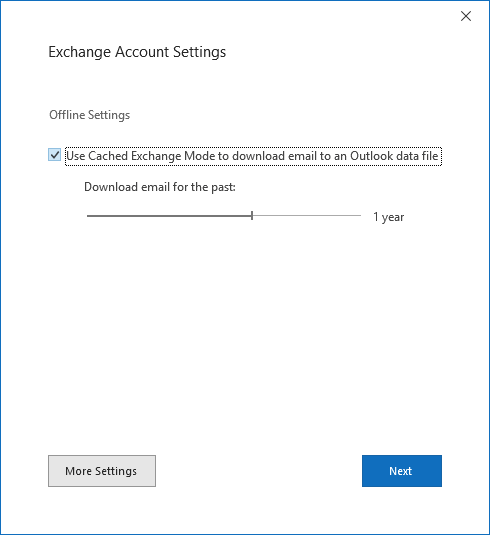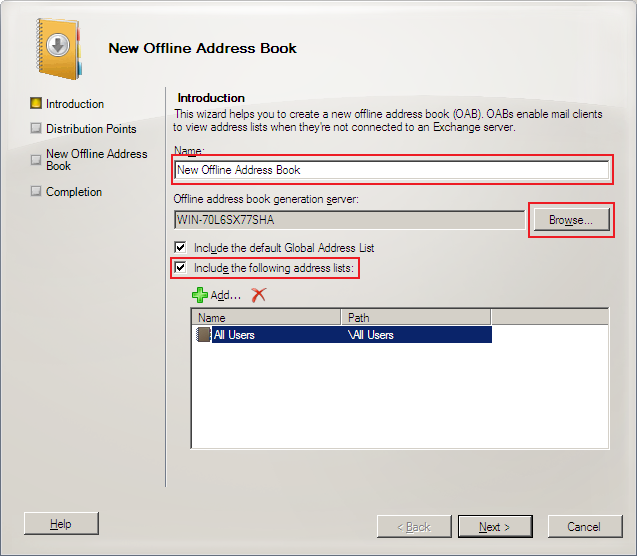



Once the Mailbox node has been selected, click the Offline Address Book tab and you should be presented with a screen similar to the one shown in Figure 1.

To do this, navigate to the Organization Configuration node and then select the Mailbox node underneath. This can be determined by examining the properties of the Offline Address Book object in the Exchange Management Console. The specific mailbox server that produces the initial data depends on which server has been configured to generate the OAB. It’s the Microsoft Exchange System Attendant service running on the mailbox server role that first produces the OAB data. We’ll be focusing on the web-based distribution method since the public folder distribution method has been around for a long time and is documented in many different articles available on the Internet. In this article we’ll be taking a look at how the OAB is generated and downloaded to the Outlook clients, allowing you to understand the overall process and at the same time giving you the ability to examine the various components of the system when you are troubleshooting issues. Having said this, it is still perfectly valid to have both the public folder and web-based distribution methods used to distribute your OAB. The web-based distribution method makes much more efficient use of bandwidth and additionally it is possible to control the locations where users can download the OAB. As a result, the web-based distribution model was designed and can be used when Outlook 2007 or Outlook 2010 is deployed to your users. Prior to the release of Exchange 2007, Microsoft announced that it was effectively de-emphasizing the role of public folders and therefore needed a way to distribute the OAB without using system public folders. This is the method supported by Outlook 2003 and earlier versions of the Outlook client. Specifically, a system public folder is used with replicas of this public folder spread throughout the Exchange infrastructure for resilience. Historically, the OAB has been distributed to Outlook clients via the public folder feature of Exchange. Such issues can occur without taking into consideration any errors that may be present within the OAB rebuild process. Due to the way that the OAB rebuild and download schedules are configured by default, it is quite possible that a user may query why a new user is not available in the address book, or perhaps why a modified user (such as after a name change) still has the old details showing despite the configuration change having taken place.


 0 kommentar(er)
0 kommentar(er)
